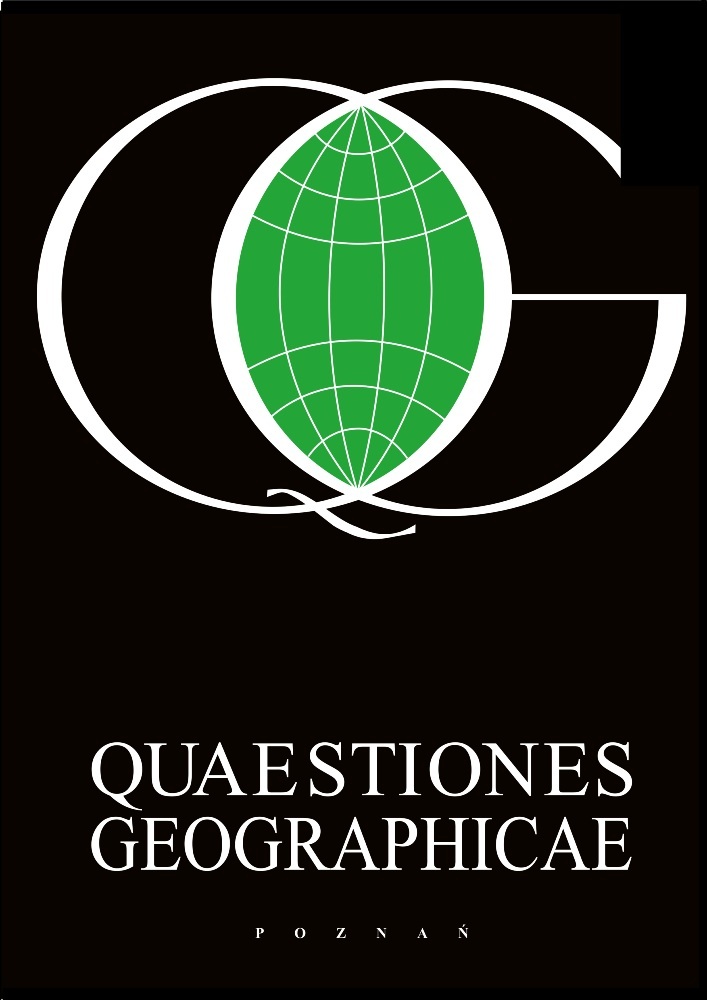Abstract
This paper deals with chosen aspects of revitalization within the downtown area of Polish medium-sized towns. The author underlines the necessity of introducing a mixed-use offer in the city centre. Not only commerce and services, but also cultural functions and values should be promoted in the contemporary city centre. Therefore the idea is presented of turning the downtown public space into a single, homogeneous and integrated spatial-functional system. The system is to introduce cultural functions on the basis of so-called cultural space, which is defined here as a specific kind of public space of historical or cultural value, or that has the potential to develop this kind of new functions.
References
Ashworth G. J., 1997. Planowanie dziedzictwa (Heritage planning). In: Broński K., Purchla J. & Zuziak Z. K. (eds), Miasto historyczne. Potencjał dziedzictwa. Międzynarodowe Centrum Kultury, Kraków: 25-48.
Blowers A., 1993. Planning for a sustainable environment. A report by the Town and Country Planning Association. Earthscan, London.
Bonenberg W., 2007. Miejska przestrzeń kreatywna (Creative urban space). Zeszyty Naukowe Politechniki Poznańskiej, 10. Wydawnictwo Politechniki Poznańskiej, Poznań.
Castex J., Pannerai P., Depaule J. C. & Samuels I., 2004. Urban forms. The death and life of the urban block. Architectural Press, Oxford, Boston.
Cichy-Pazder E., 1998. Humanistyczne podstawy kompozycji miast. Wybrane aspekty percepcyjne i behawioralne (Humanistic foundations of the composition of cities. Selected perceptual and behavioural aspects). Ośrodek Kształcenia Urbanistów Politechnika Krakowska, Kraków.
Cichy-Pazder E., 2005. Zrównoważona przestrzeń śródmiejska. Przestrzeń publiczna współczesnego miasta (A balanced downtown space. The public space of the modern city). Architektura. Czasopismo Techniczne, 1. Wydawnictwo Politechniki Krakowskiej.
Ciołek G., 1964. Zarys ochrony i kształtowania krajobrazu (An outline of landscape planning and protection). Wydawnictwo Arkady, Warszawa.
Couch C., 1990. Urban renewal. Theory and practice. Macmillan Education, London.
Gehl J. & Gemzøe L., 2003. New city spaces. Danish Architectural Press, Copenhagen.
Groep Planning, 1996. Tisser l'espace 1966-1996. Editeur Brugeois Mark van de Wiele, Brugges.
Gzell S., 2001. Projektowanie urbanistyczne jako jedno z narzędzi równoważenia rozwoju miast - przykład placów Warszawy i Berlina (Urban design as a tool for balancing urban development - an example of Warsaw and Berlin squares). In: Heczko-Hyłowa E. (ed.), Trwały rozwój polskich miast nowym wyzwaniem dla planowania i zarządzania przestrzenią. Wydawnictwo Politechniki Krakowskiej, Kraków.
Kołodziejski J., 1989. Wprowadzenie (An introduction). In: Parteka T. (ed.), Przestrzeń kulturowa w planowaniu przestrzennym. PAN, Warszawa.
Lynch K., 1969. L'image de la cite. Dunod, Paris.
Purchla J., 1993. European Cultural Month in Cracow - June 1992. Międzynarodowe Centrum Kultury, Kraków.
Purchla J., 2005. Dziedzictwo a transformacja (Heritage and the transformation). Międzynarodowe Centrum Kultury, Kraków.
Rapoport A., 1977. Human aspects of urban form. Towards a man-environment approach to urban form and design. Pergamon Press, New York.
Trieb M., 1970. Simulation de l'espace urbain. AIPA, Paris.
Ziobrowski Z., 2007. Gospodarowanie przestrzenią w Polsce w świetle spójności z Unią Europejską - uwarunkowania, kierunki zmian (Space management in Poland in the light of cohesion with the European Union - determinants and directions of change). Problemy rozwoju miast. Instytut Rozwoju Miast, Kraków.
License
This content is open access.
